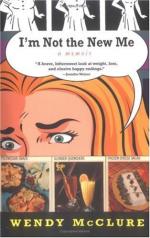Indefatigable as a worker during her long career, she produced an immense number of portraits; and while she painted comparatively few subject pictures, she arranged her models in so picturesque a fashion that, as in the example here given, her portraits have great charm of composition. With a virile grasp of form, tempered though it be with grace, Madame Lebrun offers an interesting example of woman’s work in art; and, while she has nothing to concede to the painters of her time, is no less interesting as showing that by force of native talent the woman of the early part of the century had in her power the conquest of nearly all the desired rights of the New Woman. She has left extremely interesting memoirs of her life, written in her old age, and there are many anecdotes bearing testimony to her wit. One of these goes back to the time when Louis XVIII., then a youth, enlivened the sittings for his portrait by singing, quite out of tune. “How do you think I sing?” inquired he. “Like a prince,” responded the amiable artist.
With Antoine Jean Gros we come to the last and the greatest of the pupils of David. Born in Paris March 16, 1771, he competed but once, in 1792, for the Prix de Rome, was unsuccessful, but undertook the voyage thither on his own slender resources the next year. Italy was in a troubled state—he who troubled all Europe in the early years of the century being there at the head of his army; and in 1796, at Genoa, Gros attracted the attention of Madame Bonaparte. It was she who proposed that Gros should paint Napoleon; and Gros consequently went to Milan, and after the battle of Arcole painted the hero carrying the tricolor across the bridge at the head of his grenadiers. The picture pleased Bonaparte, who had it engraved, and gave Gros a commission to collect for the Louvre the chief artistic treasures of Italy. These functions occupied him until 1801, during which period, however, he executed a number of successful portraits.
Returning to Paris after nine years, he painted the Hospital at Jaffa, representing Napoleon visiting the fever-stricken soldiers. The success of this picture, exhibited in 1804, was very great; and it remains Gros’s best title to remembrance. In it is something of the reality poetized and seen through the eyes of an artist which characterizes the work of Eugene Delacroix.
The force of David, however, was too great for Gros; at fifty years of age we find him demanding counsel of the master, who sternly bids him leave his “futile subjects,” and devote his time to great historical epochs of the past. When David was sent into exile in 1816, it was to Gros that he confided the direction of his school; and this task, and the production of immense canvases like the Battle of the Pyramids, filled his life. The picture here reproduced, the Visit of Charles the Fifth and Francis the First to the Tombs of the Kings in the Cathedral of St. Denis, was painted in 1812.




